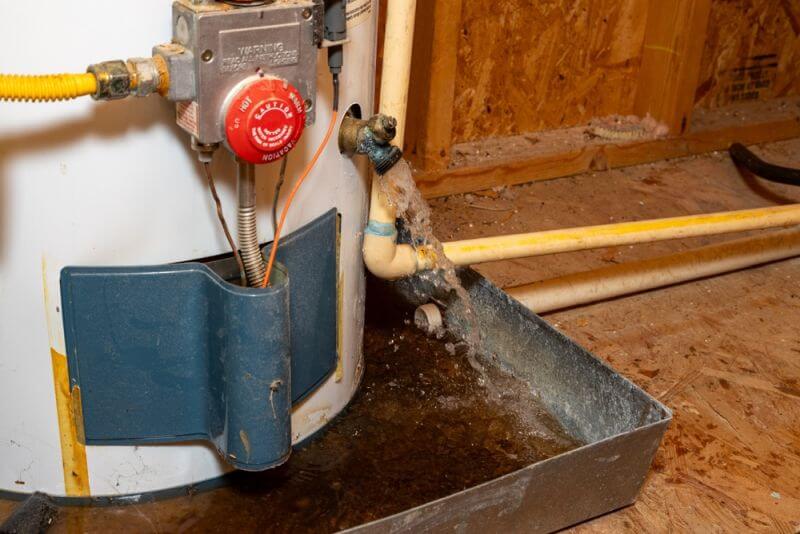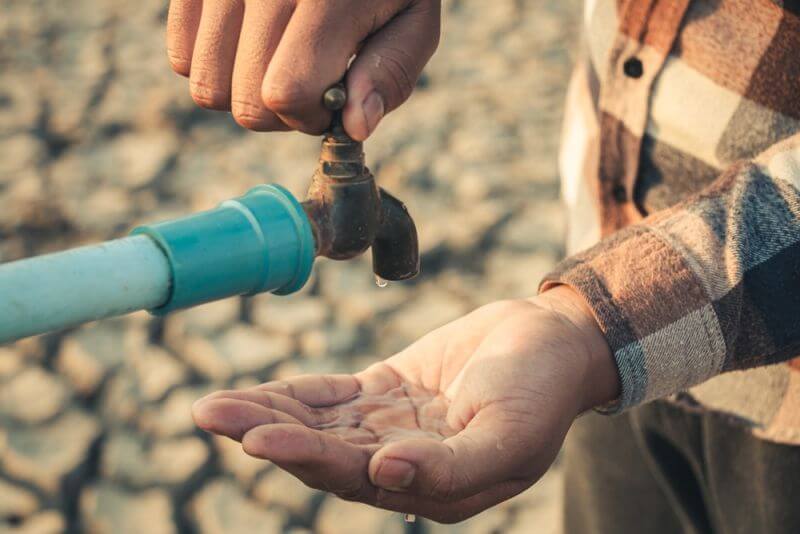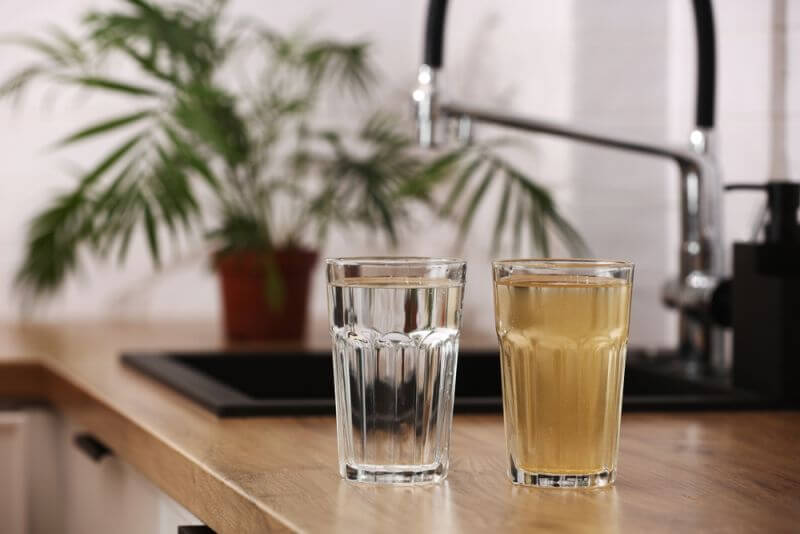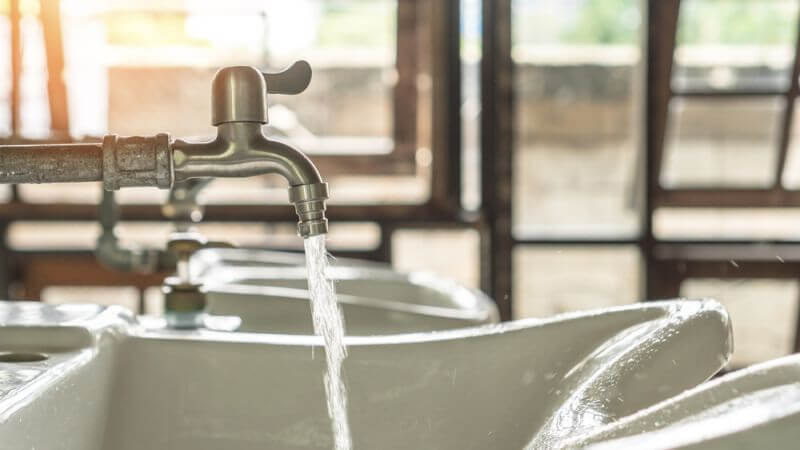From making a cup of coffee to washing dishes and taking a shower, hot water is vital for daily function. The problem is in these times when many societies are on the verge of catastrophic crashes, electricity and gas may not be reliable sources for heating up hot water. This will get worse when the crash happens and continues to unfold.
To make matters even worse, the cost of fuel for these devices has reached a point that is unsustainable for many people. Did you know that approximately 18% of your fuel usage is to run your hot water heater alone? This doesn’t even touch what you spend to heat up water for cooking on a conventional range.
Decentralizing hot water systems can be a complex topic because most standard building codes require a functioning hot water heater to be hooked into the incoming water system. In addition, the temperature at the taps must also be at a certain temperature and available at all times.
This Device Easily Turns Air Into Water!
The end result is that you will be spending a fortune on fuel to run a hot water heater around the clock, even if you aren’t home or don’t need the water every minute of the day. At first, you might think the answer is to simply install a tankless hot water heater into your central water pipe system.
This is not a viable option for most people because these devices consume a lot of power. You may find that upgrading the electricity alone may cost a fortune. Aside from that, no matter where you install the tankless heater, the hot water will still have to move through pipes. No matter how much you insulate them, this results in a loss of heat.
As you look at the following recommendations, consider the objectives that must be met as you seek to decentralize:
- must remain within the building code specs for your area
- avoid the costs associated with heat from the water escaping through pipes
- avoid the cost associated with heating water that will only cool off again before you even need it
- have hot water available in every room to suit crisis needs
- reduce fuel usage in order to save money now and in the future as costs rise.
Prevent Micro Organism Buildup With Optimal Temperatures
Hot water is about more than feeling comfortable when you wash your hands or take a shower. If the water doesn’t maintain a certain temperature until it leaves the faucet, you may wind up with diseases that tend to do well in pipes and other wet places.
In particular, Legionnaire’s disease can develop in the water heater tank and pipes when the temperature is below 120 degrees F. On the other side of the equation, you run the risk of scalding your skin if the temperature is over 140 degrees F. Therefore, you should always ensure that the water temperature is between these two temperatures at the faucet.
Even if you use municipal water that has been chemically treated, that doesn’t mean the chemical is enough to prevent disease-bearing organisms from propagating in the tank because of stagnant water and temperatures that are too low.
Maintaining Home Water Lines
When you don’t run water through the pipes, corrosion, sludge, and disease-bearing organisms can build up. Therefore, you must also consider how decentralizing will impact your existing system and overall plumbing.
Impact on Existing Tank System
One of the most overlooked parts of hot water system maintenance is routine tank flushing. The end result is sediment from the water building up in the bottom of the tank. Even in a glass-lined tank, there may be metal areas leading outward that will corrode and eventually leak.
This situation will be even worse when you don’t run water in and out of the tank for days on end. Unfortunately, you may not find out that sediment buildup is a problem until the tank begins to leak.
At first glance, you may think that you can simply run cold water through the tank and hot water line each day, and this will prevent disease, scale, sludge buildup, and corrosion. To a point, this is correct because all of these problems happen faster when water is allowed to stagnate.
Remember, though, that even in a cold water tank connected to a well, you run the risk of water-borne diseases if the temperature is above 20 degrees F or there is insufficient water circulation in the system.
You will need to consider these factors so that you can reduce hot water tank usage without contaminating the plumbing or risking serious illness.
As you look at the methods for decentralizing, you may decide to eliminate the central tank system altogether. You may need to get permits to do this, as well as hire a plumber. This could take 1 to 3 years, depending on your budget and how you manage each part of the project.
Now, let’s take a look at different devices you can use.
Under Sink Tankless Hot Water Heaters
Unlike centralized tankless hot water heaters, the ones that connect into the lines under your sink run on a standard power outlet. All you need to do is hook them into the hot water line and plug them in. These systems don’t turn on unless you turn on the hot water faucet. They will heat up the water in a matter of seconds. This saves an enormous amount of money, and you don’t have to worry about diseases building up in the hot water line. In addition, since the tankless heater is hooked into the plumbing, you are meeting the objective of having hot water on demand at the faucet.
To make this work, you would need to install a unit for each location where you need hot water at a faucet connected to your plumbing system. For example, you would need one for the kitchen sink, each bathroom sink, and each shower or tub. If you use hot water in your clothes washer, you would need to install one in that pipe as well.
Non-Sink Based Up to 4 Gallons
A 60-cup coffee urn will give you hot water at 190 degrees F in about 30 minutes. If you choose a 1500-watt device, you can plug it into any standard wall outlet in any room. All you have to do is draw hot water from the tap and transfer it to a basin to use for washing. If you want hot water for a shower, you can use a manual pump sprayer that can take hot water.
Just remember, if you use the water to wash dishes or for bathing, you will have to mix it with cold water to avoid burning your skin.
This device will never hook into your plumbing system. Nevertheless, it can serve as a bridge while you are installing tankless units. It will also make it much easier to make every room a panic room with a source of hot water, even if there isn’t a sink available.
Under 1 Gallon
You can use any standard coffee maker, tea kettle, or even a simple pot. From there, you can heat it with a hot plate, propane heater, or fire. With the exception of a standard coffee maker, you will get boiling hot water. These devices won’t give you enough water to take a shower or do a lot of cleaning, but you can manage small things easily.
Solar Hot Water and Sterilizing
Unlike power generation equipment that uses light, solar devices aimed at heating water can directly harness the sun’s heat. You can make your own devices or buy ones that have insulators and other elements built in to optimize heat retention.
There are many ways to get hot water from a solar system. You can make an elaborate system based on the Tin Can Solar Heater and hook it into your plumbing system, or even create a non-electronic panel for your roof with flexible tubing that heats the water within.
You can also use solar cookers, dedicated solar water heaters, or other devices that don’t require electricity to power a heating element. If you want to use a device with an electronic solar panel, there are small models that can heat enough water for a cup of coffee. If you look at camping gear, you may also find larger models that will heat up more water and may or may not use an electronic array.
Decentralizing hot water in your home is similar to managing heating, cooling, and air purifying in the sense that it will initially cost a good bit of money for two different kinds of devices. The cost savings over time and the ability to turn any room into a panic room will make it a worthwhile investment. If you decide to install and maintain the devices on your own, then you have the added peace of mind knowing that you don’t need to rely on a plumber in times when money or other resources are extremely scarce.









Travelin On | October 31, 2024
|
Some wonderful ideas presented. I will say, however, it sure depends on one’s situation as to the need for hot water and how to obtain it. A few months prior to finding out I had a brain tumor and was no longer able to live in or maintain an apartment, I moved into the camper van I had purchased a few years earlier. Yes, there was a propane hot water heater in the van, but I am not comfortable using propane. Finding an RV park I could rent a space in long term, I had electricity when the power company allowed electricity. No shower, no bath, only a toilet and black tank, a very small kitchen sink, a propane stove top (I didn’t use it either) and a microwave. I learned how to wash my hair (I could sit on it) in that little kitchen sink heating water in the microwave a quart at a time, mixing it with cold water to pour over my head. I could wash my hair with less than 1 gallon of water. “Baths” were all basin baths, and I found the need to wash different parts of myself and every other day every part of me would get washed, including the use of a glass file that was great for debridement of dead skin, to keep myself clean. After the brain tumor was removed the process of heating water and staying clean became something I was very thankful was already a practiced process as it was almost an automatic response. For 5 1/2 years that is the way I lived and stayed clean until I healed enough to live in something a little larger than a camper van. If the sun is shining solar hot water heaters of various types were a huge benefit, both for hot water to drink and for cleaning/laundry. I was finally able to move into a 5th wheel. It was actually much too large and it took a couple of years of needing to move from the 5th wheel and go back to the van to let the brain acclimate to what it was able to take in and absorb, then back to the travel trailer. Likely I’ll never be able to live in anything but a travel trailer, but I’m very content with that, at least I can still be independent. It is pretty amazing what people can do to get hot water and how much is actually needed (people can do with a lot less than they think), and depending on the situation people can get hot water and do with a lot less than what most very spoiled people are accustomed to. As things continue to go downhill in this country more and more people are going to have to become accustomed to doing with less. There is no guarantee electricity will be available for the tankless hot water heaters or any other hot water heater, much less liquid fuels. For cooking in the camper van and in the travel trailer I use an electric single burner cook top. When not in use it is unplugged. I still feel very spoiled in being able to take a shower & shampoo when desired, and having a hot water heater, even if it is only a 12 gallon tank. It’s more than enough to shower and shampoo. Also to have a kettle for heating hot water besides the cook top, … I am very thankful and also very spoiled. While I appreciate it, I also know there are other ways to be able to get hot water and to use a lot less than I do currently, because of a “been there, done that” 5 1/2 years of experience.